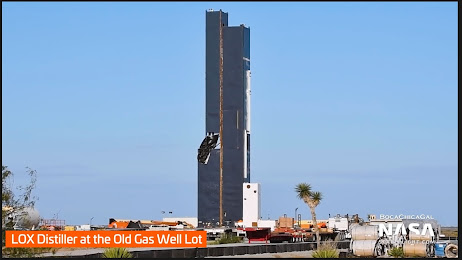This is the third in the "Building-out Mars" series. In this instalment, we will consider the New Martians eagerly awaiting the arrival of a relief crew. With the new crew comes the prospect of handover and a return journey home.
Some key concerns during handover will be the status of the construction of the long term life-support systems, since established by the Pioneer Crew. As well as oral and written handovers, the station will have the benefit of always-on analysis and diagnostics on their systems, backed up by the receiving station back on Earth.
If for whatever reason, the current crew do not complete the activities to set up and operate the propellant plant, then there is a chance that Crew 1 cannot launch to go home. If this is the case, and there is no way to decant fuel between starships to make a full tank, the Pioneer crew would have no choice but to either risk a longer journey over a growing distance, or stay on for another 2 years, risking health effects from exposure to higher accumulated dose of UV radiation.
As an indication of the scale of the facilities that would be required on Mars - above is a shot of the oxygen distillation tower, housed in the sheeted building. This isn't too far from where the construction and staging facilities are. Cryogenic distillation will not be required on Mars, however, this large infrastructure is the kind of construction which will be required to deliver regular volumes of O2 and fuel propellant. Then there is the matter of storage. In the SpaceX tank farm, there are regasification facilities and storage tanks to condition the liquid natural gas prior to loading into the Starship. This can be seen operating and giving fingers of wispy white clouds at low level during cryogenic testing, static fire and launch attempts.
However, according to Elon Musk's plans, the team would not necessarily need to wait the full 26 Earth months before returning. In the event of a problem, and if they have propellant sorted, the team could return sooner than that.
However, given the size of the propellant and liquid oxygen storage facilities at the SpaceX Boca Chica site, it could be reasonable to expect some similar size facility is required on Mars simply to prepare and store enough propellant for easy and quick loading of the Starships travelling back and forth from Earth.
Communications
Remember, depending on the position of Mars relative to Earth in the 2 year aligned-misaligned orbit around the Sun, it can take anywhere from 3 to 22 minutes for a message to be shared from Earth to Mars or vice-versa. Given that a transmitted message can only travel at the speed of light - the distance is a big factor when setting communications. The closer the two planets are - like that ideal launch window to sent craft and people to Mars/ Earth, the lower the lag in communications. This would help the crew once landed, as the higher frequency of communications can help them feel more supported by those folks in operations team back home.
Standard communication - phone-calls, video calls become impractical with these kinds of lag-times. Instead - recorded video messages and log entries would be beamed back and forth in packets for Earth and the crew to digest in an asynchronous working pattern.
Up to present, this had not been a problem - sending commands and data with significant delays was a tolerable approach for unmanned rovers. However, with the always-connected culture that has developed on Earth, this significant delay in comms response could take some getting used to. This would only serve to add to the feeling of isolation, that the crew, however many there are, are indeed on their own.
Communication with the incoming crew, family and friends at home on Earth and keeping good relations on station at Mars will be critical to ensuring stable mental health states.
Checking into Rehab
At this point, the Martians have been in space, voyaging to Mars for 6 months. They followed this with 2 years on the surface for approximately 2 years. Now the crew face another 6 months in space before arriving on Earth. Whether this return journey takes a stop at the International Space Station for a transfer to a Crew Dragon capsule for reentry remains to be seen.
Given the energy requirements to launch a Starship and to reach Earth orbit, it may be more agreeable to do such a transfer in Earth orbit instead of heading for a straight re-entry. To safely arrive to Earth, the crew would need to enter an orbit around the earth anyway. It would make sense for them to then intergrate their travel plan into an integrated Earth-Moon transit system.
On re-entry, the crew would need to immediately be quarantined and attended by medics, getting straight into some deep physio-therapy to re-acclimatise to Earth gravity, fresh air at normal Earth atmospheric pressure, etc.
Our series continues as we follow the Relief Crews as they continue the build out of critical systems on Mars.





Comments
Post a Comment